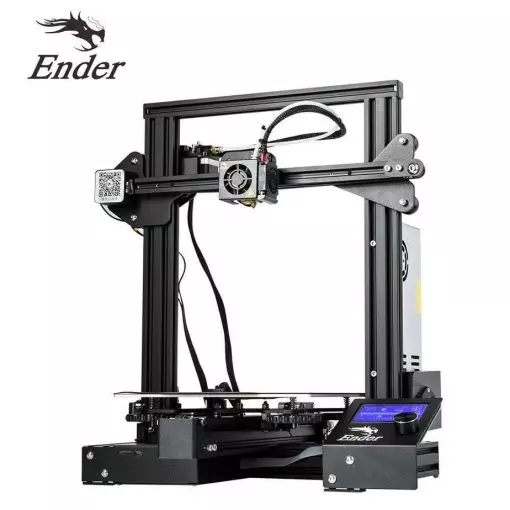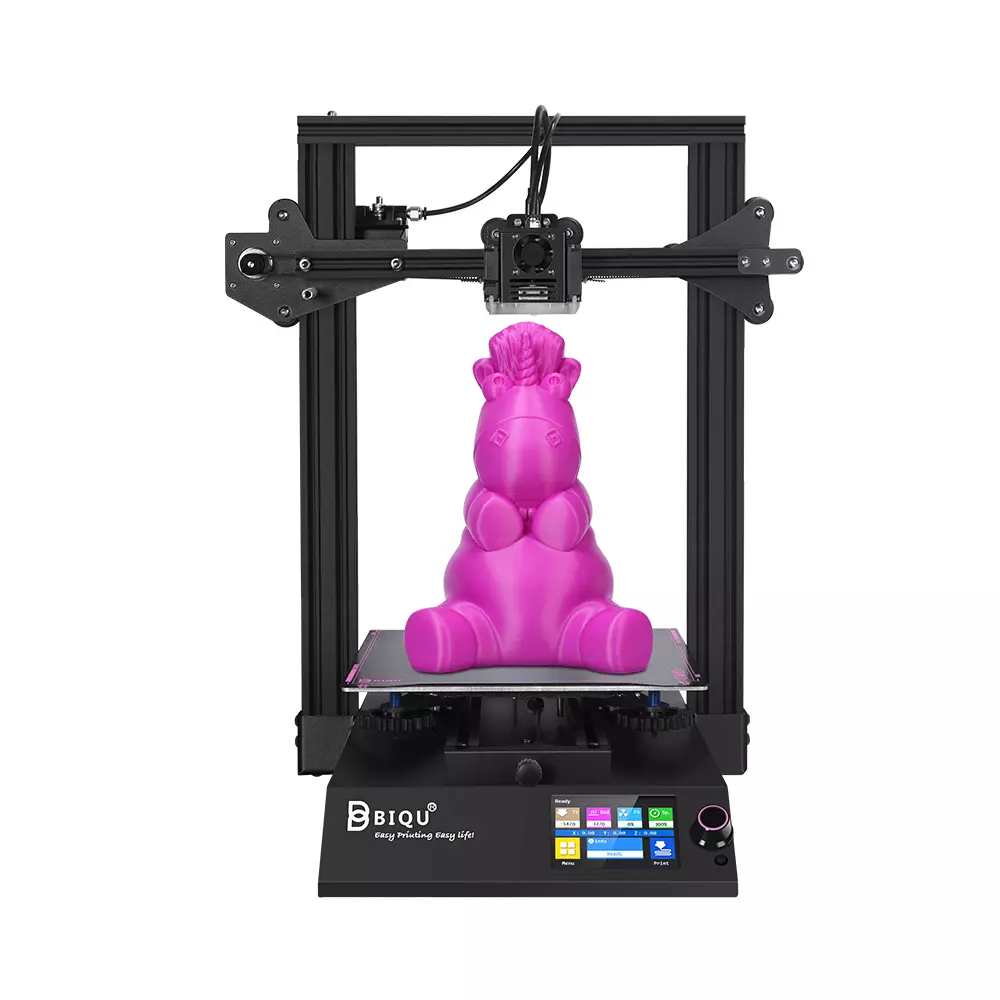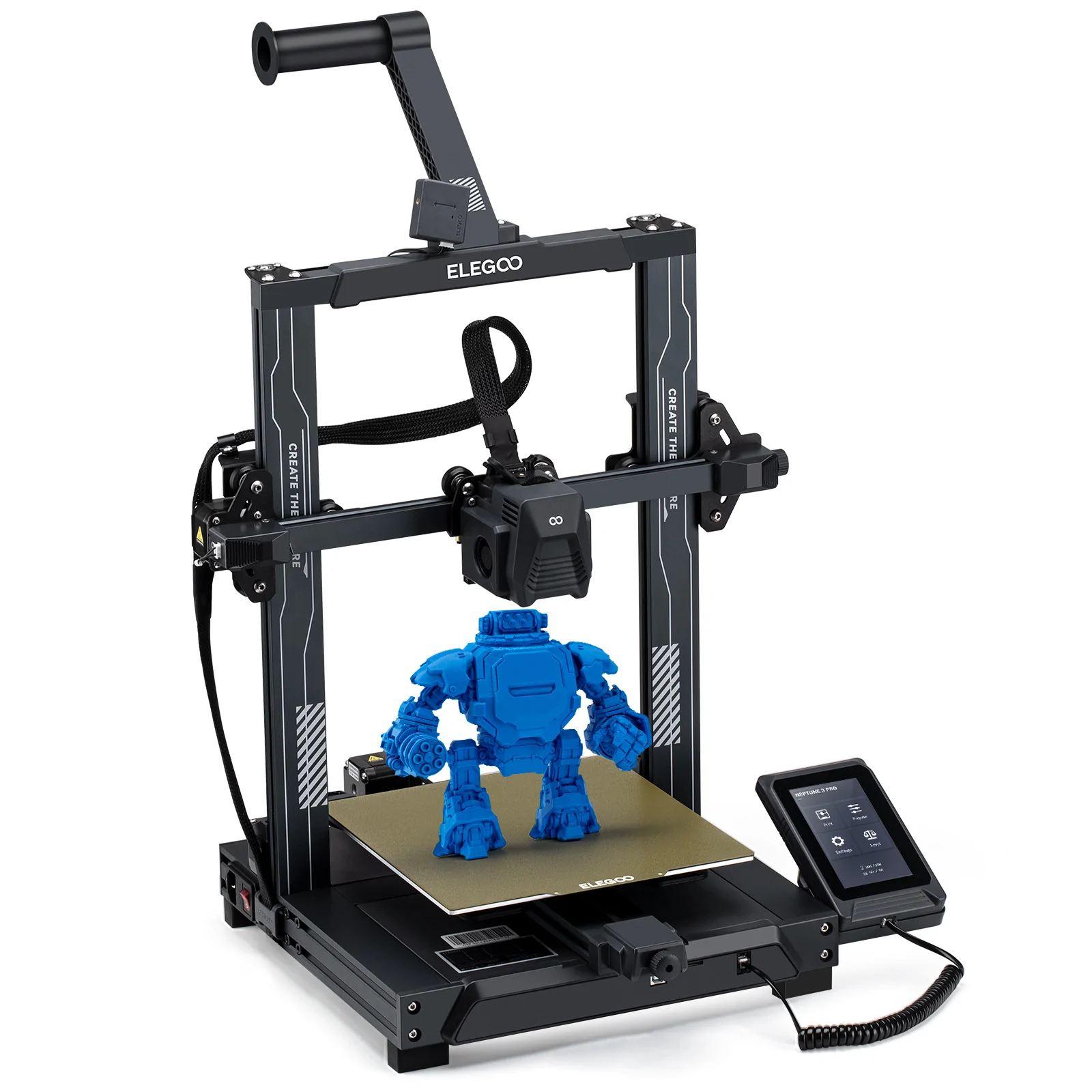Compare Ender 3 vs BIQU B1 vs Neptune 3 PRO
Comparison between the best 3D printers
Choose the best 3D printer at the best price. The cheapest 3D printers are here.
Buy a 3D printer here with 3D Fila.
 |
 |
 |
|
| Model | Ender 3[BUY Ender 3] |
BIQU B1 |
Neptune 3 PRO |
| Printing Material | Filament | Filament | Filament |
| Estimated price | $210,00 | $269,00 | $230,00 |
| Fabricante | Creality 3D | BigTreeTech | Elegoo |
| Release Year | 2018 | 2020 | 2022 |
| Print Volume [mm] | 220x220x250 | 235x235x270 | 225x225x280 |
| Printer Size [mm] | 440x440x465 | 412x402x492 | 445x515x475 |
| Weight [kg] | 6,62 | 8,00 | 8,1 |
| Power Loss Recovery | NO | YES | YES |
| Enclosed printer | NO | NO | NO |
| Bed Leveling | Manual | Manual | Automatic |
| Filament End Sensor | NO | YES | YES |
| Bed type | Heated | Heated | Heated |
| Power supply system | Bowden | Bowden | Direct Drive |
| Standard nozzle | 0,4 | 0,4 | 0,4 |
| Maximum Nozzle Temperature [°C] | 255 | 250 | 260 |
| Maximum Bed Temperature [°C] | 110 | 100 | 100 |
| Maximum printing speed [mm/s] | 180 | 100 | 80 |
| Filament holder | YES | YES | YES |
| Camera for supervision | NO | NO | NO |
| Recommended filaments | PLA, TPU, ABS, PETG | PLA, TPU, ABS, PETG | PLA, PETG, Tritan, Flex, ABS |
| Recommended slicers | Cura, Simplify, Slic3r | Cura, Simplify, Slic3r | Cura, Simplify, Slic3r, IdeaMaker e outros |
| Maximum Resolution [mm] | 0,1 | 0,1 | 0,1 |
| Processor | 8 bits | 32 Bits BTT SKR V 1.4 | |
| Display | Mono | Touchscreen TFT 3,5'' | Display touchscreen 4,3'' |
| Power Supply | 24V / 270W | 24V / 360W | 250 |
| Connectivity | SD / USB | SD / USB | |
| Operating systems | Windows, Mac, Linux | Windows, Mac, Linux | Windows, Mac, Linux |
| Date of registration in the system | 2021-04-13 | 2021-04-14 | 2023-03-02 |
| Release date | 2018 | 2020 | 2022 |
| Extra features | The Ender 3 V1 is a DIY assembly 3D printer, a sales leader since 2017, standing out for its cost-benefit. With a wide printing capacity, it has a CNC machined structure for precision and stability. It offers high-precision prints with low noise, thanks to its innovative V-profile and pulleys. It has a self-adhesive magnetic platform for easy removal of models and excellent adhesion. The Ender 3 heats up quickly, reaching 100°C in 5 minutes, ideal for agile prints. It includes protection against power failures, allowing you to resume printing after interruptions, saving time and material. | The BIQU B1 is an advanced 3D printer with a silent 32-bit BTT SKR V1.4 motherboard and ARM Cortex-M3 CPU, offering DIY interfaces (I2C, SPI, WiFi) and dual Z-axis. Its dual BTT B1 TFT35 V3.0 operating system allows real-time monitoring and multiple printing modes, including G-code visualization effects. It stands out for its BIQU SSS (Super Spring Steel), ensuring easy model adhesion and simplified removal, with the possibility of using it on both sides. It includes a filament sensor, automatically pausing printing in case of filament breakage. The multicolored RGB lights integrated into the hotend allow you to view the printing status even at night. Additional notes include the need for a BIQU-specific Type-C cable and extra interfaces for smart filament sensor and BL Touch. | The Elegoo Neptune 3 Pro printer stands out for its easy assembly and automatic bed leveling, ideal for different levels of users. Equipped with a direct-drive extruder and dual gears, it offers excellent adhesion to slippery materials such as TPU. It incorporates dual screws on the Z-axis, ensuring stable prints, and features an integrated task light for improved visibility. With a PEI-coated build plate and a detachable touchscreen, it combines functionality and convenience. The printer also features an efficient cooling system, filament sensor and a simplified user interface. |
| Support for multiple colors and materials (AMS and CFS) | NO | NO | NO |
Notes * |
|||
| Cost-benefit | 6 / 10 | 7 / 10 | 7 / 10 |
| Hardware | 0.5 / 10 | 2 / 10 | 2.8 / 10 |
| Screen | . | . | . |
| Print volume | 3 / 10 | 3 / 10 | 3 / 10 |
| Performance | 1 / 10 | 1 / 10 | 0 / 10 |
| [BUY Ender 3] |
Conclusion |
| In comparing the three 3D printers—Ender 3, BIQU B1, and Neptune 3 PRO—each model has its strengths and ideal use cases, making them suitable for different users depending on their needs, preferences, and budget. 1. **Ender 3**: As the most cost-effective option, the Ender 3 is known for its strong community support and DIY assembly, making it an excellent choice for beginners and hobbyists looking for affordability and reliability in prints. While it lacks advanced features such as power loss recovery and automatic bed leveling, its proven performance and decent print volume make it a solid entry-level choice. 2. **BIQU B1**: This mid-range printer excels in features like a silent motherboard, dual Z-axis, filament sensor, and enhanced print adhesion with its special steel build plate. Its combination of functionality and slightly higher price point allows for a more advanced user experience, making it suitable for enthusiasts who want more control and flexibility in their 3D printing endeavors. 3. **Neptune 3 PRO**: The most expensive of the three, the Neptune 3 PRO adds value through its automatic bed leveling, direct-drive extruder, and excellent material compatibility. It is designed for users who require ease of use and a streamlined experience, making it a good option for intermediate to advanced users who prioritize print quality and convenience. In summary, for those seeking value without overspending, the Ender 3 provides a great entry point into 3D printing. The BIQU B1 delivers a balanced mix of features and performance for passionate hobbyists, while the Neptune 3 PRO appeals to those wanting high functionality and ease of use in their printing tasks. Ultimately, the choice depends on personal priorities regarding budget, features, and intended usage, with each printer offering unique advantages. |

